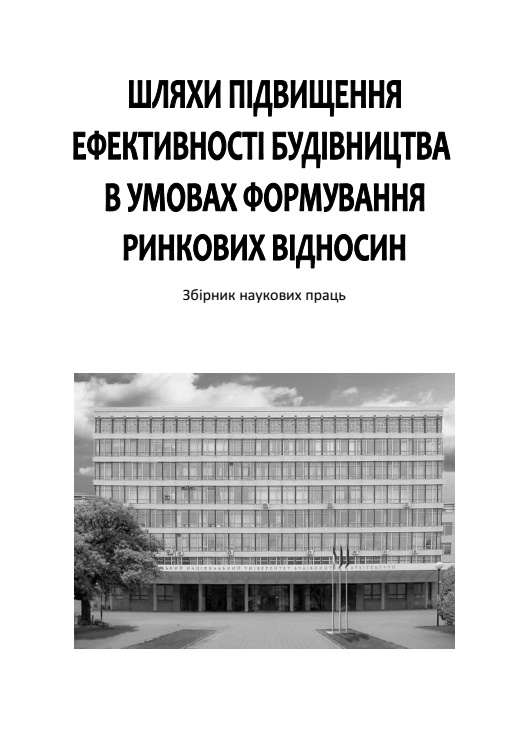Use of active aggregates in concrete as a guarantee of expansion of raw material base and reduction of cost of products
DOI:
https://doi.org/10.32347/2707-501x.2021.48(1).100-107Keywords:
alkaline concrete, reactive (active) aggregate, alkalinity index (pH), alkaline corrosion of concreteAbstract
Traditional natural materials (mainly granite and quartz) are usually used as aggregates for the manufacture of concrete products and structures. This raw material is tested, reliable and does not cause destruction during operation of structures. However, it is exhaustive and characterized by high cost. That is why it is advisable to consider the use of reactive (active) aggregates. Especially if you consider ways to eliminate alkaline corrosion. The development of alkaline concrete compositions with the use of active aggregates is the key to expanding the raw material base for the manufacture of building materials with a reduction in production costs compared to products based on traditional systems. The use of active mineral additives allows to reduce the content of free alkalis in the system, preventing the alkaline corrosion of hardened artificial stone. Simultaneously. the processes of interaction of the active siliceous component with alkalis in the cement system can be transferred from the category of destructive (such as destroying the structure of hardened stone) in constructive processes (binding these components into insoluble compounds during hydration and cement formation, without breaking its fixed structure and sealing material). Studies have shown the high efficiency of the proposed approaches for the binding of excess alkalis (more than 0.6%) and targeted synthesis of alkaline aluminosilicate-type tumors in the composition of artificial cement stone. At the same time, the issue of extending the results to control the formation of structures at different levels of concrete with the use of general construction cements requires further research, and the issue of stopping alkaline corrosion of hardened concrete has not been raised and is innovative from the point of view of domestic and world science.
References
Wallau, W., Pirskawetz, S., Voland, K. et al. Continuous expansion measurement in accelerated concrete prism testing for verifying ASR-expansion models. Mater Struct 51, 79 (2018). https://doi.org/10.1617/s11527-018-1205-0
Кривенко П.В. Особенность формирования зоны контакта "шлакощелочной цемент минеральное волокно". ІІ Международный Симпозиум по цементным и бетонным технологиям в 2000. Турция, Стамбул, 610 сентября, 2000. C.8897.
Кривенко П.В., Пушкарьова К.К., Кочевих М.О. Заповнювачі для бетону Київ: ФАДА ЛТД, 2001. 399 с.
Ryduchowska D., Niemczewski H. Ocena efektywnosci zbrojenia zaczynow gipsowych wloknami szklanymi i polia-midowymi. Cement, wapno, gips, 1979, No. 6, p. 205-208.
Kovalchuk O., Gelevera O., Ivanychko V. Studying the influence of metakaolin on self-healing processes in contact-zone structure of concretes based on the alkali- activated Portland cement. Eastern-European Journal of Enterprise Technologies, No. 5/6 (101), 2019. Pp. 33-40. DOI:10.15587/1729-4061.2019.160959
Krivenko P.V., Kovalchuk O. (2020). Influence of type of alkaline activator on durability of alkali activated concrete using aggregates capable to alkali-silica reaction. Key Engineering materials. Vol. 864, pp. 180-188 DOI: 10.4028/www. Scientific.net/KEM.864.180
Кривенко П., Ковальчук О., Гелевера О. Вплив складу лужних цементів на лужну корозію заповнювачів з активним кремнеземом. Науковий вісник будівництва. Х.: ХНУБА, 2019. Т. 98. Вип. 4. С. 85 - 92.
Purnell, P., & Beddows, J. (2005). Durability and simulated ageing of new matrix glass fibre reinforced concrete. Cement and Concrete Composites, 27, 875-884. https://doi.org/10.1016/j.cemconcomp.2005.04.002
Downloads
Published
How to Cite
Issue
Section
License

This work is licensed under a Creative Commons Attribution 4.0 International License.
Authors who publish with this journal agree to the following terms:
- Authors retain copyright and grant the journal right of first publication with the work simultaneously licensed under a Creative Commons Attribution License that allows others to share the work with an acknowledgement of the work's authorship and initial publication in this journal.
- Authors are able to enter into separate, additional contractual arrangements for the non-exclusive distribution of the journal's published version of the work (e.g., post it to an institutional repository or publish it in a book), with an acknowledgement of its initial publication in this journal.
- Authors are permitted and encouraged to post their work online (e.g., in institutional repositories or on their website) prior to and during the submission process, as it can lead to productive exchanges, as well as earlier and greater citation of published work (See The Effect of Open Access).

